The tech world was recently electrified by Apple’s eagerly anticipated Wonderlust event on September 12, 2023, during which the company unveiled its latest innovations: the iPhone 15 and iPhone 15 Pro. These new additions to Apple’s illustrious iPhone lineup promise to not only captivate tech enthusiasts but also reshape the landscape of the entire tech industry.
With groundbreaking changes in camera systems, a meticulous redesign, and a leap forward in mobile CPU/GPU technology and connectivity, the iPhone 15 series is poised to revolutionize our expectations of what a smartphone can offer.
In this comprehensive exploration, we will delve deep into the remarkable features that define the iPhone 15 and iPhone 15 Pro. From the stunning design upgrades to the enhanced performance capabilities, we’ll dissect every facet of these devices.
Additionally, we’ll contrast the four different iPhone 15 series models—the iPhone 15, iPhone 15 Plus, iPhone 15 Pro, and iPhone 15 Pro Max—to give you useful information that will enable you to choose the model that most closely matches your needs and preferences in a smartphone. Let’s set out on a journey to learn more about the iPhone 15 and iPhone 15 Pro’s core features, outstanding specifications, target market, cost, and availability.
Key Features of the iPhone 15 and iPhone 15 Pro
Design
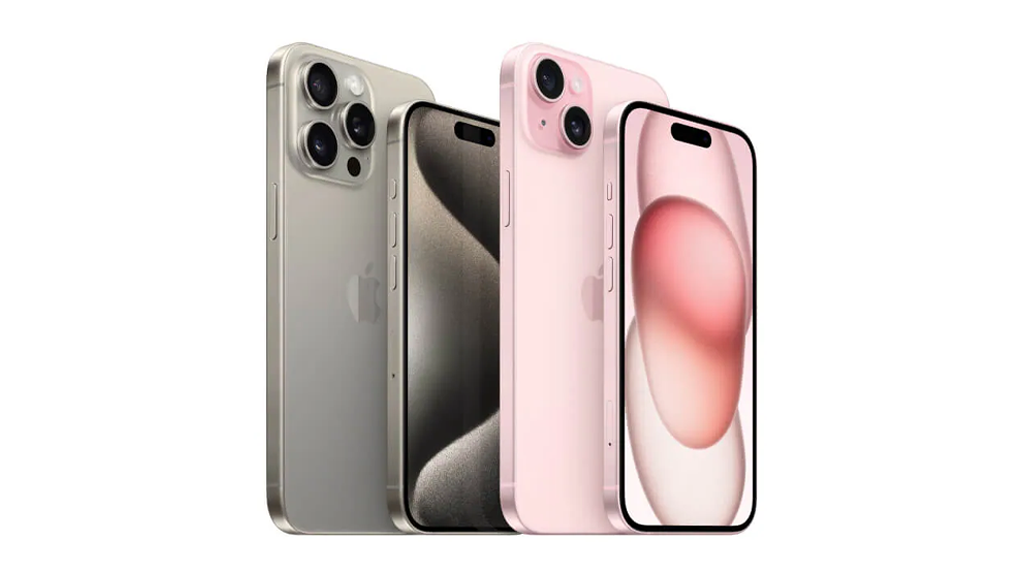
The iPhone 15 introduces an entirely fresh design concept, one that Apple has meticulously crafted to enhance ergonomics and user comfort. With an emphasis on grip and tactile pleasure, Apple has contoured the iPhone 15, making it easier to hold securely. However, design improvements aren’t limited to just ergonomics; the iPhone 15 also debuts a captivating spectrum of colors. This new color palette includes pink, yellow, green, blue, and black, giving users a wide range of options to express their style.
Moreover, Apple has elevated the device’s resilience. The iPhone 15 boasts water and dust resistance, as well as a tougher ceramic-coated glass material for both the screen and the back, ensuring durability. The attention to design details extends to the iPhone 15 Pro, which adopts a premium “Grade 5” titanium enclosure. Available in black, white, and blue, and with a striking natural raw silver look, the iPhone 15 Pro redefines elegance and durability.
One of the most noteworthy design innovations in the iPhone 15 Pro is the transformation of the ringer/silence switch. It has evolved into a haptic button that can be customized to execute a predefined set of actions or assigned to a Shortcut workflow. This functionality mirrors the Action Button on the Apple Watch Ultra, providing users with greater flexibility and personalization.
Lightning Connector to USB-C
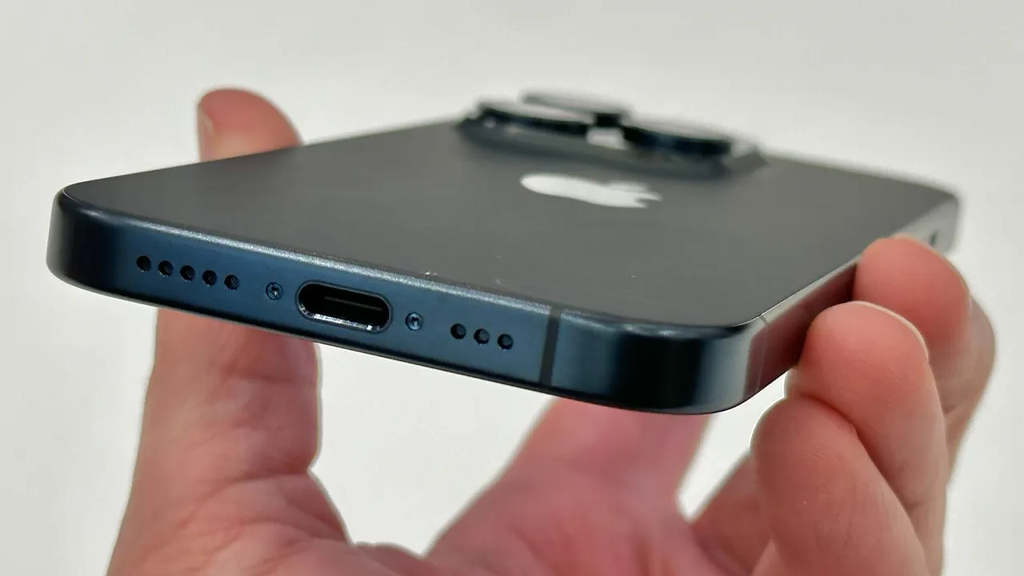
A significant departure from tradition comes in the form of a switch from the Lightning connector to USB-C across all models in the iPhone 15 series.
. Impressively, it delivers a maximum HDR brightness of 1,600 nits and supports Dolby Vision. The iPhone 15 is available in two sizes to accommodate a range of tastes: 6.1 inches for the regular model and 6.7 inches for the iPhone 15 Plus.
Although there have been rumors of this change for some time, Apple shocked everyone with a sudden change. With its ground-breaking USB controller, the iPhone 15 Pro in particular can support data transfers at up to 10GB/s using USB-C 3.0.
This technological leap opens up exciting possibilities. Users of the iPhone 15 Pro can now enjoy nearly instantaneous transfer of 48MP camera images to a connected Mac, and they can even connect external drives to the iPhone 15 Pro. This expansion of capabilities is especially beneficial when dealing with large file formats like 4K60 video recordings. It’s important to note, however, that non-Pro iPhone 15 models will still adhere to the limitations of Lightning USB speeds.
Screen Sizes and Upgrades
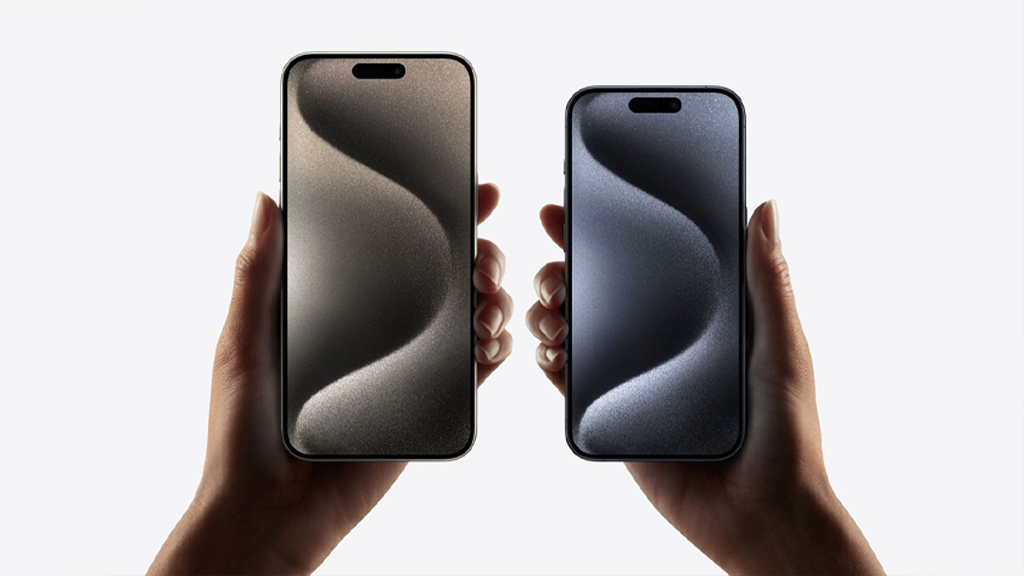
Apple has significantly raised the bar in screen technology with the iPhone 15 series. The standard iPhone 15 now features an OLED screen with Super Retina XDR support. Impressively, it delivers a maximum HDR brightness of 1,600 nits and supports Dolby Vision. The iPhone 15 is available in two sizes to accommodate a range of tastes: 6.1 inches for the regular model and 6.7 inches for the iPhone 15 Plus.
The screen experience is enhanced on the iPhone 15 Pro models. Apple gives users a more compact iPhone without compromising screen space by reducing bezels. The screens of the iPhone 15 Pro and iPhone 15 Pro Max remain 6.1 inches and 6.7 inches, respectively, in size. These Pro versions use the Super Retina XDR display, which supports ProMotion and provides adjustable refresh rates of up to 120Hz for more fluid interactions. Furthermore, the iPhone 15 Pro versions are the only ones to include an always-on stand-out feature in iOS 16.
Camera
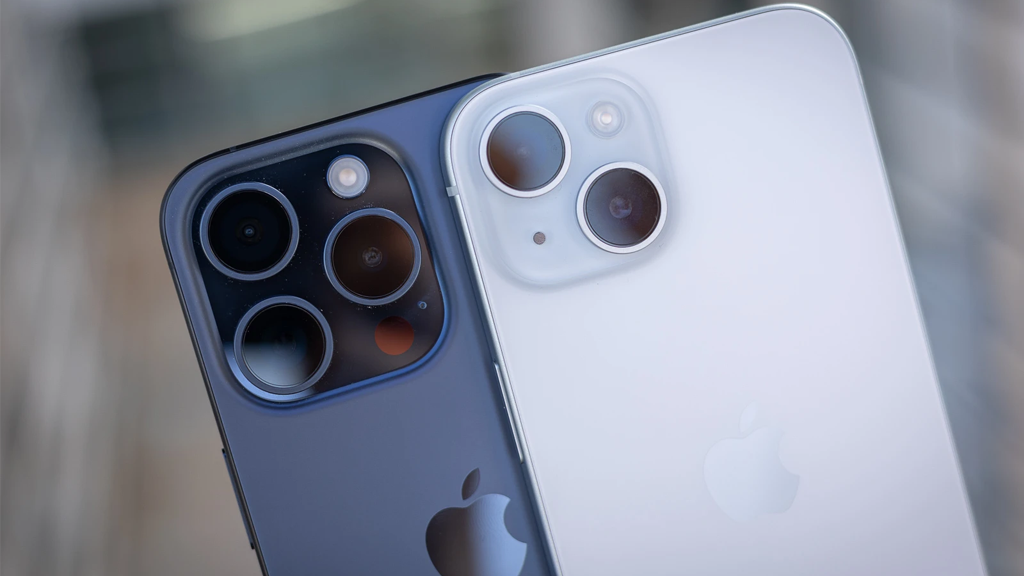
Apple has consistently strived to elevate the camera systems in its iPhones, aiming to rival professional setups. In the iPhone 15 and iPhone 15 Pro, Apple has upped its game significantly. The iPhone 15 boasts a formidable 48MP main camera equipped with sensor-shift optical image stabilization. A new 2x telephoto option facilitates digital cropping of the center 12MP camera, delivering telephoto capabilities within a compact form factor. The continuous zoom option in videos further enhances the 4K cinematic mode.
However, where Apple truly shines is in the iPhone 15 Pro. These models take camera capabilities to new heights. With the iPhone 15 Pro and Pro Max, users essentially have access to seven distinct camera lens options at all times. The main camera on the iPhone 15 Pro stands as a 48MP powerhouse, featuring a nano-scale coating that minimizes lens flare and augments low-light performance. This innovation enables users to capture photos in a stunning 48MP HEIF format, perfect for RAW photography enthusiasts. Furthermore, users can select from 24mm, 28mm, and 35mm focal lengths, offering unprecedented versatility.
The iPhone 15 Pro Max, the most substantial iteration of the iPhone 15 Pro, introduces a groundbreaking 12MP 5x telephoto lens. This remarkable lens, equipped with a tetraprism design, achieves a 120mm, ƒ/2.8 aperture lens, revolutionizing zoom capabilities in smartphones.
Both iPhone 15 Pro models possess the capacity to create spatial videos, promising to bring content to life on the upcoming Apple Vision Pro, further establishing Apple’s commitment to pushing the boundaries of visual content creation.
Performance
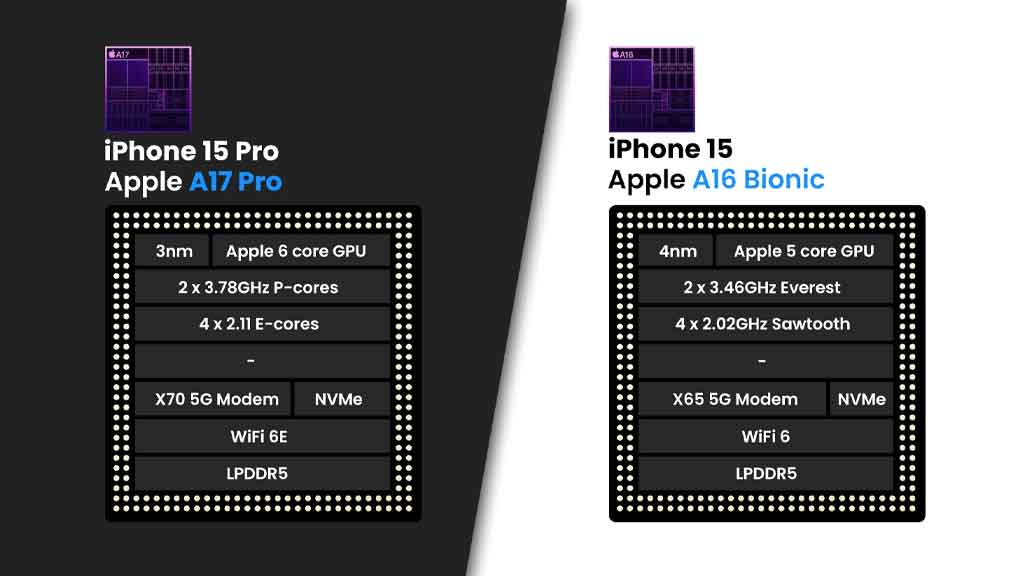
Apple has always been at the forefront when it comes to the technical specifications of its custom silicon. The iPhone 15 series continues this tradition with an impressive array of performance enhancements. The standard iPhone 15 lineup inherits the A16 Bionic chip from the iPhone 14 Pro. This chip features a 5-core CPU optimized for accelerated graphics and gaming, coupled with a 16-core neural engine capable of tackling machine learning tasks and handling on-device processing for voice, video, and images.
However, the pièce de resistance is reserved for the flagship—the iPhone 15 Pro model. These devices introduce the groundbreaking A17 Pro chipset, heralded as the industry’s first 3-nm chip. Boasting a staggering 19 billion transistors, this chip represents a quantum leap in terms of performance and efficiency. It encompasses two high-performance cores and a whopping 16 cores dedicated to the neural engine, capable of executing an astonishing 35 trillion operations per second.
The A17 Pro chip also extends its support to the ProRes codec and AV1 decoder, significantly enhancing video performance for rendering and exporting. Moreover, a redesigned 6-core GPU, 20% faster than its predecessor in the iPhone 14 Pro, brings substantial gaming enhancements, incorporating hardware-based ray tracing and additional shaders for an unparalleled gaming experience.
Connectivity
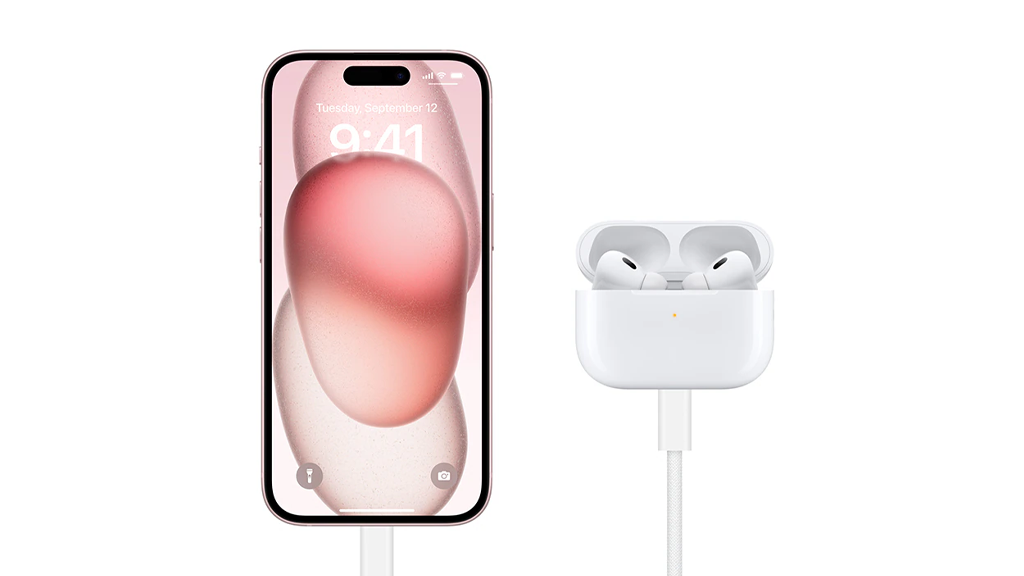
The iPhone 15 series brings forth several advancements in connectivity. The Ultra-Wideband chip receives a notable upgrade, extending its reach by up to 2 times. This enhancement is particularly valuable when it comes to locating misplaced Apple Watch devices, AirPods, or AirTags. Additionally, the iPhone 15 integrates a new machine-learning model that prioritizes the user’s voice during phone calls, ensuring crystal-clear communication.
Emergency SOS via satellite is expanding its coverage to include more countries and continents, with Spain and Switzerland among the latest additions. Furthermore, this service introduces a new feature: Roadside Assistance via satellite, offered in collaboration with the renowned roadside assistance provider AAA. This feature provides users with access to assistance on a membership or pay-per-use basis, enhancing safety and convenience.
In summary, all iPhone 15 models offer Bluetooth 5.3, Wi-Fi 6, 5G connectivity, and Gigabit LTE support, ensuring robust and seamless connectivity. It’s essential to note that only the iPhone 15 Pro models possess the capability to work with Thread networking technologies, a valuable feature for those invested in smart home ecosystems.
Dynamic Island
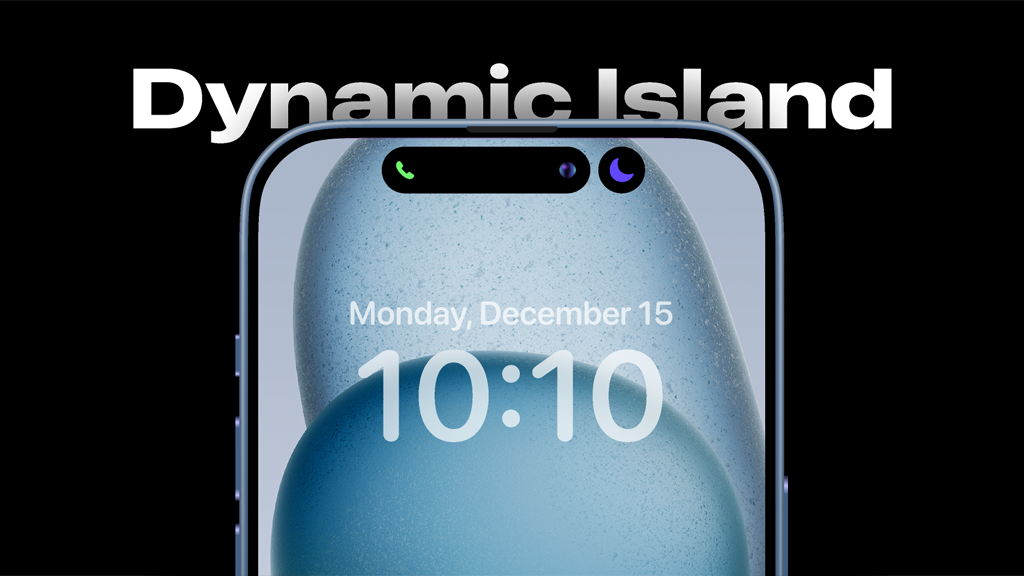
Dynamic Island, previously reserved for the iPhone 14 Pro, has now become a standard feature in the iPhone 15. This dynamic portion of the screen, positioned near the top, adapts intelligently to alerts, calls, and push notifications. This innovation not only enhances user experience but also boosts productivity by delivering pertinent information in real time.
Differences Between iPhone 15 Models
let’s provide detailed information about the differences in iPhone models, covering each aspect comprehensively:
Capacity
- iPhone 15 and iPhone 15 Plus: These models are available in three storage capacities: 128GB, 256GB, and 512GB, providing ample storage options for various user needs.
- iPhone 15 Pro and iPhone 15 Pro Max: These flagship models take storage to the next level, offering a whopping 1TB storage option, making them ideal for users with extensive storage requirements, such as professionals and media enthusiasts.
Size and Weight
- iPhone 15: With a width of 2.82 inches, a height of 5.81 inches, and a slim depth of 0.31 inches, the iPhone 15 strikes a balance between portability and screen size. It weighs 6.02 ounces.
- iPhone 15 Plus: For users who prefer a larger display, the iPhone 15 Plus offers a wider form factor with dimensions of 3.06 inches in width, 6.33 inches in height, and a depth of 0.31 inches. It weighs slightly more at 7.09 ounces, providing an immersive visual experience.
- iPhone 15 Pro: Maintaining a compact form, the iPhone 15 Pro measures 2.78 inches in width, 5.77 inches in height, and 0.32 inches in depth. It weighs 6.60 ounces, offering a balance between screen size and pocketability.
- iPhone 15 Pro Max: Designed for those who desire a substantial display, the iPhone 15 Pro Max boasts dimensions of 3.02 inches in width, 6.29 inches in height, and a depth of 0.32 inches. It weighs 7.81 ounces, delivering an immersive viewing experience.
Display
- iPhone 15: Equipped with a Super Retina XDR Display, the iPhone 15 features a 6.1-inch OLED screen with a resolution of 2556 x 1179 pixels at 460 ppi.
- iPhone 15 Plus: The iPhone 15 Plus also features a Super Retina XDR Display, but with a larger 6.7-inch OLED screen boasting a resolution of 2796 x 1290 pixels at 460 ppi.
- iPhone 15 Pro: The iPhone 15 Pro shares the same Super Retina XDR Display as the standard model, with a 6.1-inch OLED screen and a resolution of 2556 x 1179 pixels at 460 ppi.
- iPhone 15 Pro Max: With its Super Retina XDR Display, the iPhone 15 Pro Max offers a massive 6.7-inch OLED screen with a resolution of 2796 x 1290 pixels at 460 ppi.
Always-On Display
- iPhone 15 and iPhone 15 Plus: Neither of these models includes an ‘always-on’ display feature.
- iPhone 15 Pro and iPhone 15 Pro Max: Both Pro models incorporate an ‘always-on’ display, allowing for convenient access to information and notifications without unlocking the device.
Chipset
- iPhone 15 and iPhone 15 Plus: These models are powered by the A16 Bionic chip, featuring a 6-core CPU, 5-core GPU, and a 16-core Neural Engine.
- iPhone 15 Pro and iPhone 15 Pro Max: The flagship models boast the A17 Pro chip, the industry’s first 3-nm chip with 19 billion transistors. This chip includes two high-performance cores, a 16-core Neural Engine, and a 6-core GPU, offering exceptional performance and efficiency.
Camera System
- iPhone 15 and iPhone 15 Plus: These models feature a 48MP main camera with sensor-shift optical image stabilization, a 2x digital zoom telephoto lens, and a 12MP True Depth front camera.
- iPhone 15 Pro and iPhone 15 Pro Max: The Pro models include a 48MP main camera with a nano-scale coating for improved low-light performance and RAW photo capabilities. They offer options for shooting at 24mm, 28mm, and 35mm focal lengths. The Pro Max variant also introduces a 12MP 5x telephoto lens for enhanced zoom capabilities.
Storage Options
- iPhone 15 and iPhone 15 Plus: Storage options include 128GB, 256GB, and 512 GB.
- iPhone 15 Pro and iPhone 15 Pro Max: These models offer extensive storage choices, including 128GB, 256GB, 512GB, and a remarkable 1TB option.
Apple iPhone 15 and iPhone 15 Pro pricing
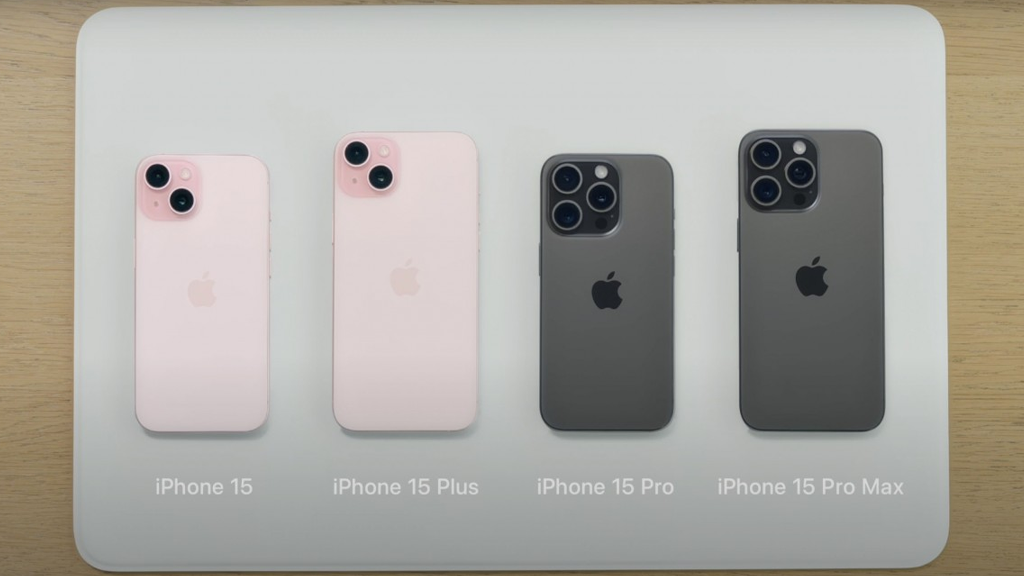
The price approach for the iPhone 15 series demonstrates Apple’s dedication to providing a variety of solutions to accommodate a range of preferences and budgets.
- iPhone 15: This entry-level model, while packed with impressive features, starts at a competitive price point of $799. Users who may be upgrading from prior iPhone models or those looking for a potent yet economical smartphone can both afford this pricing.
- iPhone 15 Plus: Slightly larger and offering an even more immersive visual experience with its larger display, the iPhone 15 Plus begins at $899. This pricing positions it as a premium option for users who prioritize screen size and premium features.
- iPhone 15 Pro: Stepping into the realm of pro-level performance and capabilities, the iPhone 15 Pro starts at $999. This model targets users who demand top-tier performance, camera capabilities, and innovative features, making it an ideal choice for professionals and tech enthusiasts.
- iPhone 15 Pro Max: At the top end of the spectrum, the iPhone 15 Pro Max starts at $1,099. This pricing reflects its status as the flagship model within the iPhone 15 series, offering the ultimate in performance, photography, and technology. It appeals to users who seek the very best in smartphone innovation and capabilities.
There is an iPhone 15 model to suit every demand and price range according to Apple’s pricing strategy for the iPhone 15 series. You can choose the device that exactly matches your needs and preferences, whether you’re a casual user, a photography enthusiast, or a professional in need of cutting-edge gear thanks to the variety of pricing and features available.
Summary and Final Verdict
The iPhone 15 series is a testament to Apple’s commitment to innovation, top-notch design, and user-centric technology in the rapidly changing world of smartphones. Apple makes sure that there is an iPhone 15 for everyone by offering four different versions, each of which offers a different combination of features and skills.
These gadgets are designed for a wide range of users, from the stylish and reasonably priced iPhone 15 to the enormous iPhone 15 Pro Max. The iPhone 15 series meets your needs whether you’re fascinated by photography, long for a cinematic display, or need a powerful smartphone for professionals.
It’s obvious that Apple continues to raise the bar for smartphone technology as we eagerly await the formal release of these smartphones and investigate their capabilities in greater detail. The iPhone 15 series offers a view into the future of mobile innovation, where each user’s needs are expertly and precisely satisfied. It is more than just a selection of smartphones.
Therefore, the iPhone 15 series welcomes you to experience a new era of mobile technology—one that’s meant to exceed your expectations—whether you’re an Apple enthusiast waiting for your next update or a tech enthusiast eager to explore the latest innovations. The technology of the future is now here and in your hand.
FAQs
1. What are the key features of the iPhone 15 series?
A new curved design, the switch to USB-C, OLED Super Retina XDR screens, enhanced camera systems, and potent A16 and A17 Pro chipsets are just a few of the standout characteristics of the iPhone 15 series. Models differ from one another in terms of size, weight, and storage possibilities.
2. What are the main differences between the iPhone 15 models?
Four models make up the iPhone 15 series: the iPhone 15, iPhone 15 Plus, iPhone 15 Pro, and iPhone 15 Pro Max. The primary distinctions between them are in terms of size, with different screen sizes and storage capabilities. In comparison to the ordinary models, the Pro models also have a “always-on” display and more sophisticated camera systems.
3. Who is the target market for the iPhone 15?
The iPhone 15 series is designed to cater to a diverse audience. The standard iPhone 15 models are suitable for users looking for an upgrade from earlier iPhone versions, while the Pro models target professionals and tech enthusiasts who demand top-tier performance and camera capabilities.
4. What is the pricing range for the iPhone 15 series?
The cost of the iPhone 15 series varies depending on the model. Starting at $799, the iPhone 15 costs $899 for the Plus model, $999 for the Pro model, and $1,099 for the Max model. Depending on the storage capacity, the prices could go up.
5: What are the benefits of the ProRes codec and spatial video capabilities in the iPhone 15 Pro?
The ProRes codec in the iPhone 15 Pro enhances video performance for rendering and exporting videos, making it a powerful tool for videographers. Spatial video capabilities allow users to create immersive videos that can be experienced on Apple’s upcoming Apple Vision Pro, adding a new dimension to video content.
6. What are the standout features of the iPhone 15 Pro models?
The iPhone 15 Pro models distinguish themselves with features like an ‘always-on’ display, advanced camera systems, including the ability to shoot in RAW format, and a powerful A17 Pro chipset. They also offer extensive storage options, including a 1TB variant.
7. How does the iPhone 15 series compare to its predecessor, the iPhone 14?
The iPhone 15 series enhances the strengths of the iPhone 14 while also bringing about appreciable advancements in design, functionality, and camera quality. Users will find the switch to USB-C, modern chipsets, and improved displays to be appealing upgrades.
8. What is the significance of the new USB-C connectivity in the iPhone 15 Pro models?
The iPhone 15 Pro models feature a new USB controller that supports up to 10GB/s transfer speeds over USB-C 3.0. This enables fast data transfers to a Mac and the ability to connect external drives for expanded recording options, particularly useful for high-resolution video recording.
9. How does the iPhone 15 series contribute to the future of mobile technology?
The iPhone 15 series is a testament to Apple’s dedication to advancing mobile technology. It establishes a new benchmark for smartphones by accommodating a wide range of user needs and preferences with a combination of cutting-edge features, sophisticated chipsets, and adaptable camera systems.
10. What should users consider when choosing an iPhone 15 model?
Users should consider factors like their budget, size preferences, storage needs, and usage requirements. The iPhone 15 series offers a model for everyone, from those seeking affordability and practicality to professionals and tech enthusiasts demanding the best in technology.
11. What are the standout features of the iPhone 15’s new design and colors?
The new curved design of the iPhone 15 not only looks good but also makes it simpler to grip. It is available in a variety of vivid hues, including as pink, yellow, green, blue, and black. The device’s rear glass is made of a durable ceramic material, and the screen and back glass are both dust- and water-resistant.
12. How does the pricing of the iPhone 15 vary based on storage capacity?
There are several storage options available for the iPhone 15, including 128GB and 256GB. The 128GB variant is priced at $799, and the 256GB model is priced at $899. For consumers who require even more storage, a 512GB model is also offered for $1,099 at this time.
13. Can you explain the key camera upgrades in the iPhone 15, particularly the 48MP main camera?
Certainly! The iPhone 15 features a 48MP main camera with sensor-shift optical image stabilization. This camera allows for stunningly detailed photos, and a new 2x telephoto option digitally crops the center 12MP camera without losing detail. It’s great for capturing telephoto shots and even supports continuous zoom-in videos.
14. What is the significance of the shift to USB-C in the iPhone 15 lineup?
The shift to USB-C is a notable change in the iPhone 15 series. It enables faster data transfer speeds, especially in the iPhone 15 Pro models, which support up to 10GB/s transfer speeds over USB-C 3.0. This means near-instant transfer of large files and expanded recording options.
15. How does the iPhone 15’s A16 Bionic chip contribute to its performance and capabilities?
The A16 Bionic chip in the iPhone 15 delivers exceptional performance. It features a 5-core CPU for faster graphics and gaming and a 16-core neural engine for handling machine learning tasks and on-device processing of voice, video, and images. This chip ensures a smooth and powerful user experience.
16. What sets the iPhone 15 Pro apart in terms of design and color options?
The iPhone 15 Pro features an all-new brushed titanium design, which is both striking and durable. It comes in four elegant colors: black, white, blue, and a natural raw silver look, offering a premium and professional aesthetic.
17. How does the pricing for the iPhone 15 Pro differ from the standard iPhone 15 models?
The iPhone 15 Pro is positioned as a premium model and starts at $999 for the 6.1″ version. The larger 6.7″ model begins at $1,199. Pricing increases for higher storage capacities and the larger 6.7″ model because of additional features like the telephoto zoom lens.
18: What is the significance of the A17 Pro chip in the iPhone 15 Pro’s performance?
The A17 Pro chip is a groundbreaking 3-nm chip with 19 billion transistors. It improves both performance and efficiency with two high-performance cores and 16 cores for the neural engine, capable of handling 35 trillion operations per second. It also supports advanced features like the ProRes codec and hardware-based ray tracing.

